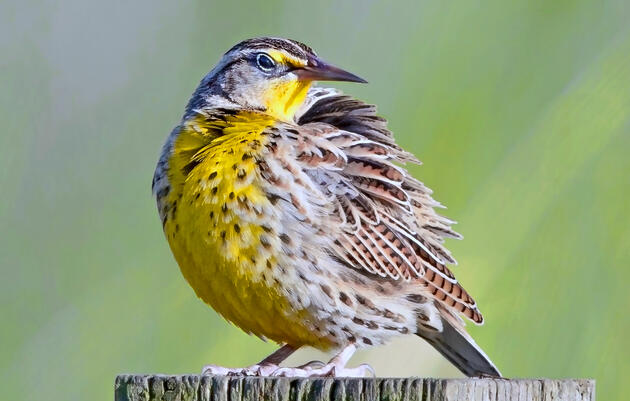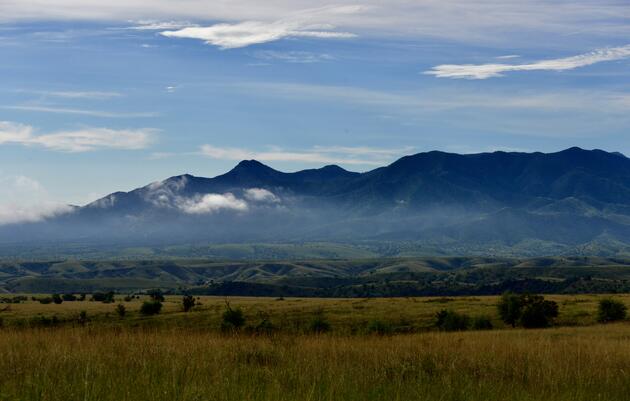On the Appleton-Whittell Research Ranch of the National Audubon Society, the southernmost outpost of Audubon Southwest, we strive to eliminate all human influences on the land in order to maintain the site as a biological sanctuary and controlled field research station. However, with staff members living on site and with researchers, volunteers, and others making frequent visits, living up to this goal isn’t always simple.
The most recent challenge came in the form of our local rattlesnakes deciding that the spaces beneath our staff and researcher housing units were perfect overwintering sites. As these animals, mostly western diamondback and Mojave rattlesnakes, began working their way out of their dens and onto our patios this past spring, we found ourselves with a management conundrum: how do we ensure safety for those living and working on the Research Ranch while doing the best we can for our scaley neighbors? After all, it’s not their fault that our buildings make for perfect winter hideaways!
To help us think it through, we reached out to our friends at Phoenix-based Rattlesnake Solutions. Specializing in excluding and relocating unwanted rattlesnakes from homes and businesses, the Rattlesnake Solutions team was excited by the opportunity to try something new. While they were confident that they could exclude the snakes from our buildings once the animals left during the warmer months, doing so would present another problem. Natural, rocky den sites are few and far between on the Research Ranch, and animals returning to the now-closed dens were likely to find themselves stuck out in the cold, burning resources, putting themselves at risk of predation, and possibly dying from exposure. So, not only did we have to exclude the snakes, but we also had to build them some new homes.
Given the nature of our problem, we knew that the snakes would gladly accept a human-built setup. But, we also knew that it wouldn’t be quite that simple. The perfect overwintering site has plentiful food, opportunities to both bask in the sun and hide in the shade, protection from the wind, a substrate that holds a consistent temperature, and other features that help overwintering snakes survive the season. Because of our goal of limited impact, the locations also had to be in already-disturbed areas, and the dens had to be designed so that they could be installed by hand, eliminating the need for heavy machinery. With the help of predictive models being developed as a tool for finding natural den sites, the technical and construction know-how of Rattlesnake Solutions, and the Research Ranch staff’s deep knowledge of the sanctuary, we found two perfect sites – one up the road from our researcher bunkhouses in a patch of non-native Boer Lovegrass, and the other around the corner from our staff housing units atop the foundation of a house lost in the Ryan Fire of 2002.
With a design ready and sites chosen, the only challenge remaining was to figure out how to actually install the new dens. We had holes to dig, materials to haul, and literally tons of concrete to lay, and we needed many hands to make the work possible. Fortunately for us, our colleagues at Audubon Southwest are blessed with a loyal team of intrepid volunteers and a way for them to sign up for projects: Conservation Workdays. We scheduled the event for October to line up with the rattlesnakes’ return to their wintering sites, and now with everything in place, we brought in the Rattlesnake Solutions team to seal up the old dens.
In classic Conservation Workday fashion, our fifteen volunteers made quick work of the installation. They broke into two teams, one for each site, and in just a few hours had the new dens installed. Since there was some extra time, we decided to stop by the researcher bunkhouses to search for returning snakes and, as luck would have it, we found three! These three snakes were our first to be relocated, and we’re hopeful that we’ll see them again come spring.
Rattlesnakes looking for an overwintering site have lots of options in our human-built landscape, and when they choose a problematic site, things can end very poorly for snakes and people alike. If we are successful in relocating the dens on the Research Ranch, we’ll be on our way toward building a model for den site relocations and informing conservation efforts well beyond our fences. We’re thrilled to be able to have turned a management challenge into both promising conservation science and an opportunity to engage the public in our work. Thank you to our supporters, partners, and volunteers for making it possible!






